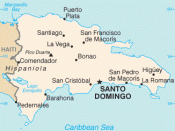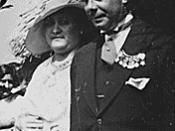In Julia Alvarez's historically accurate novel, In the Time of the Butterflies, many revolutionary motifs appear, with one of the most impactant being rain, just like in George Orwell's Animal Farm. Keeping in mind both these books, it is prudent to say that rain washes and cleans dirty places to nourish them in order to pertain growth and progress. Also, it is indisputably shown that revolutions be it for good or bad are prone to end up in a good way after they fail, being ironic. While under these circumstances, three girls who mostly acted alone led a country-wide peaceful re-revolutionary movement against Trujillo. "The quickest way to end a war is to lose it.", was written by George Orwell, and has given a prediction of how revolutions are. This revolution could be compared to a living nightmare for many of the Dominican habitants, but once they woke up from that nightmare, a new, bright, long-awaited, sunny day was at its start.
The three sisters, which were popularly known as the "mariposas" required to go under intense struggles and grave traumas in order for an effect to be made Trujillo at all. A single man is the ruler of himself, but so is everyone else, causing misconceptions of what he was trying to accomplish with the revolution, giving birth to the rebels of the revolution. This sets the bases which guarantee negative revolutions will end up failing, but give a small time of flourishing and nourishment afterwards for the whole country. In order to maintain this state of glory for the country, the inhabitants must learn and understand its history, for it not to repeat itself, and cause another tyranny to rise. Even though the country receives greatness, its governmental infrastructure is very delicate, and is prone to be...


